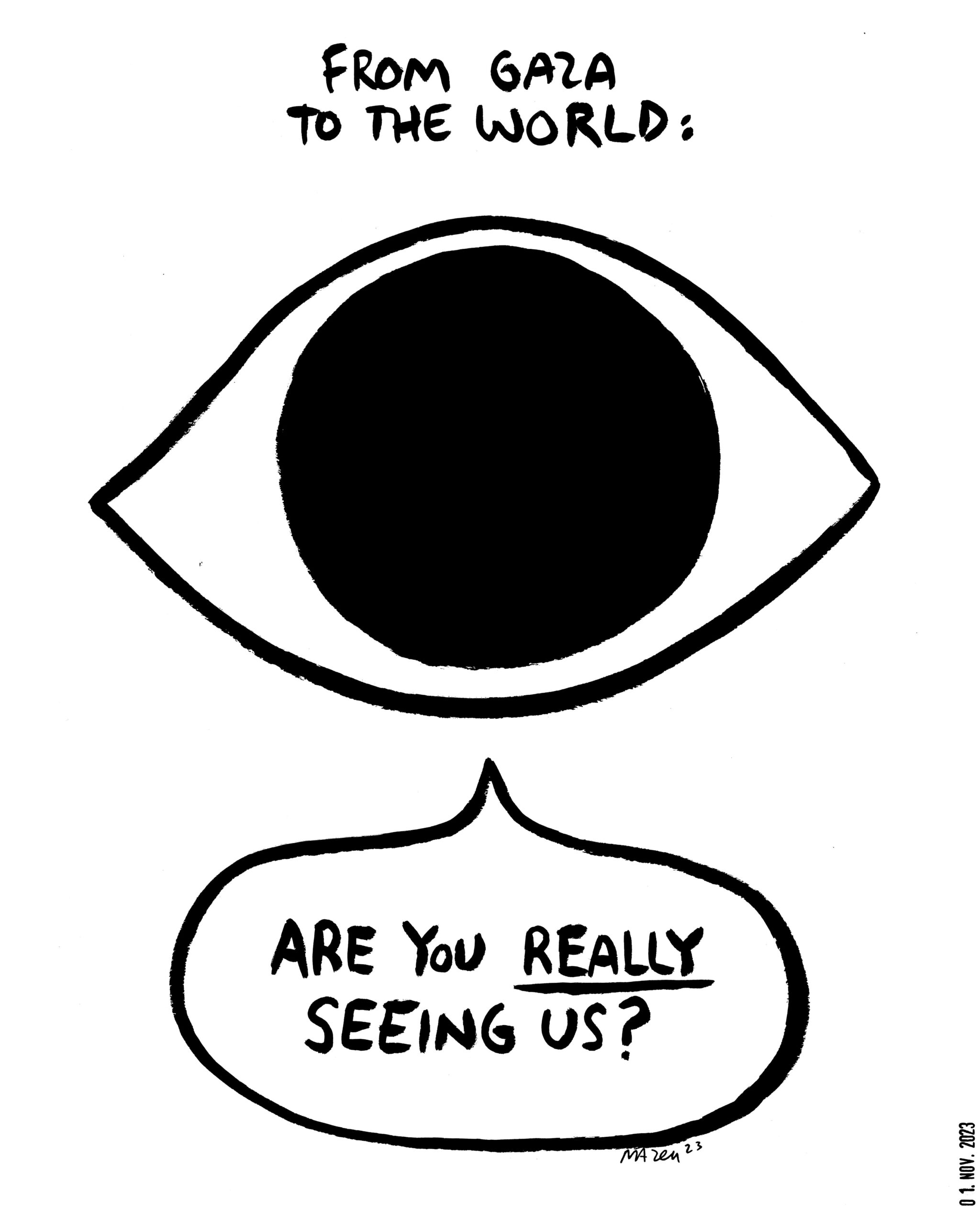Fighting Back With Drawings
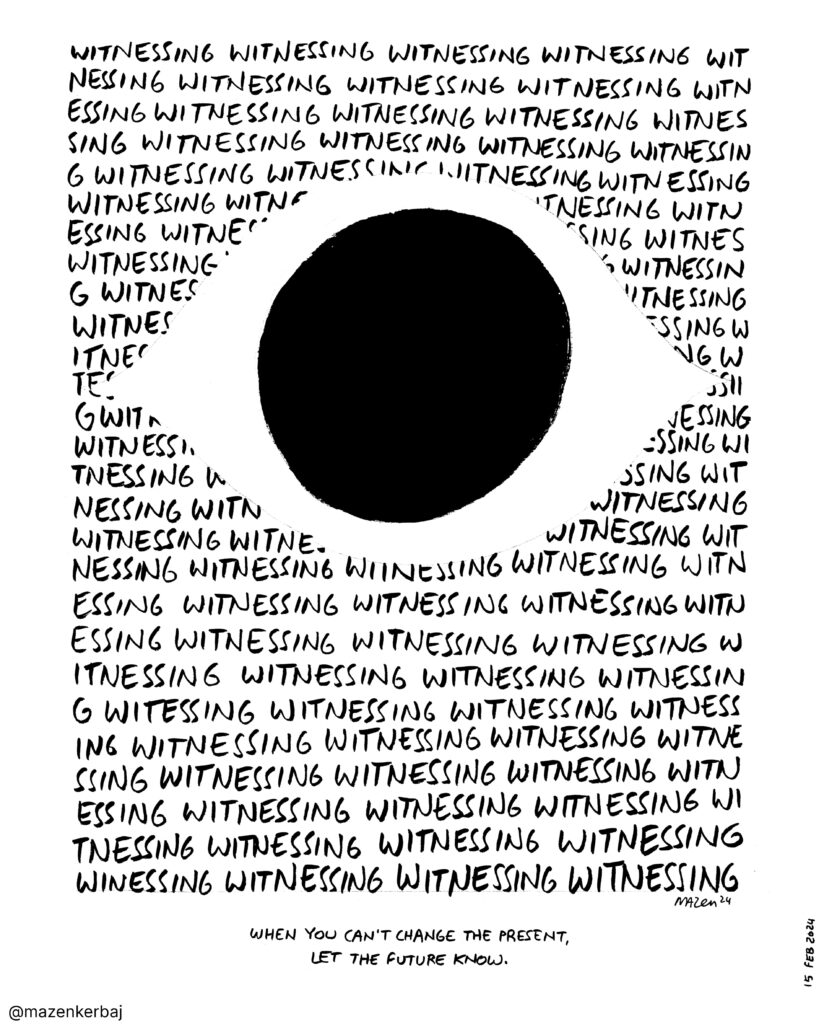
This article was originally written in Dutch by Eva Hilhorst for Stripgids #15. Sadly enough, in Gaza things only got worse since the interview. Now Lebanon, Kerbaj’s homecountry, is under attack as well.
After the wall came down in 1989 Berlin attracted a lot of artists, there was a spirit of freedom and experiment. There were a lot of undeveloped spaces and rent was cheap. Nowadays, capitalism has taken over the city and the atmosphere has become a bit grim. “For me, Berlin was the best city in the world to live in. Until the 7th of October 2023”, says Mazen Kerbaj, Lebanese visual artist and musician. He lives in Berlin since 2015. “Every event that is organized in favor of Palestine is forbidden, because it is labelled as antisemitic.” When you think about the fences, aka the Iron Wall, that Israel built around Gaza, this seems quite cynical.
In the first days of October, Mazen Kerbaj was just putting the finishing touch to a mural at a festival in Ljubljana, when Hamas attacked Israel in a brutal way. The mural was a four panel comic strip depicting a boy in Gaza who just want to go to sleep. The mural was completed on the evening of the 7th of October. After hearing the news, the organizers were worried and said: maybe this is not the right time for such a mural. Five days later the situation in Israel had changed, Israel had hit back in such an atrocious manner that the organizers decided: the mural actually is quite accurate.
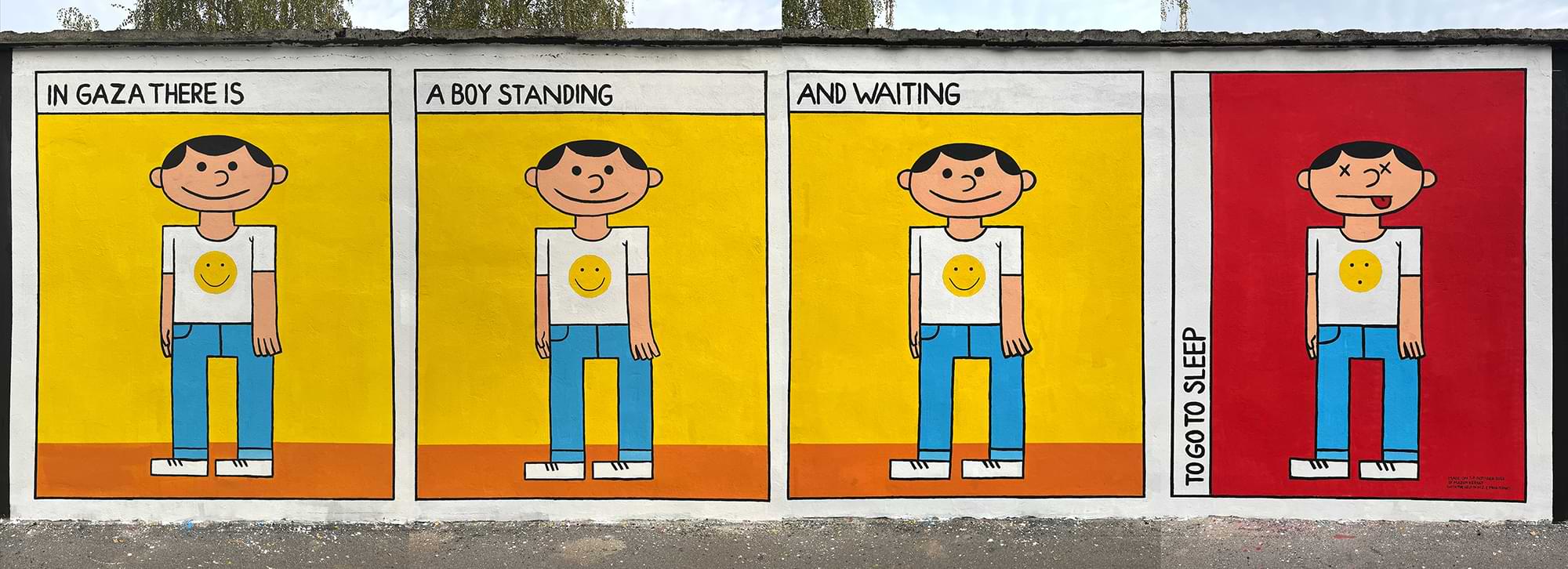
The mural actually was on old drawing, Kerbaj is making drawings about the situation in the region for a long time. He started making a visual diary in 2006, during the 33-day war between Israel and Lebanon, where he was living then. He published them on a blog he created then, and they were later published in a book (Beirut Won’t Cry).
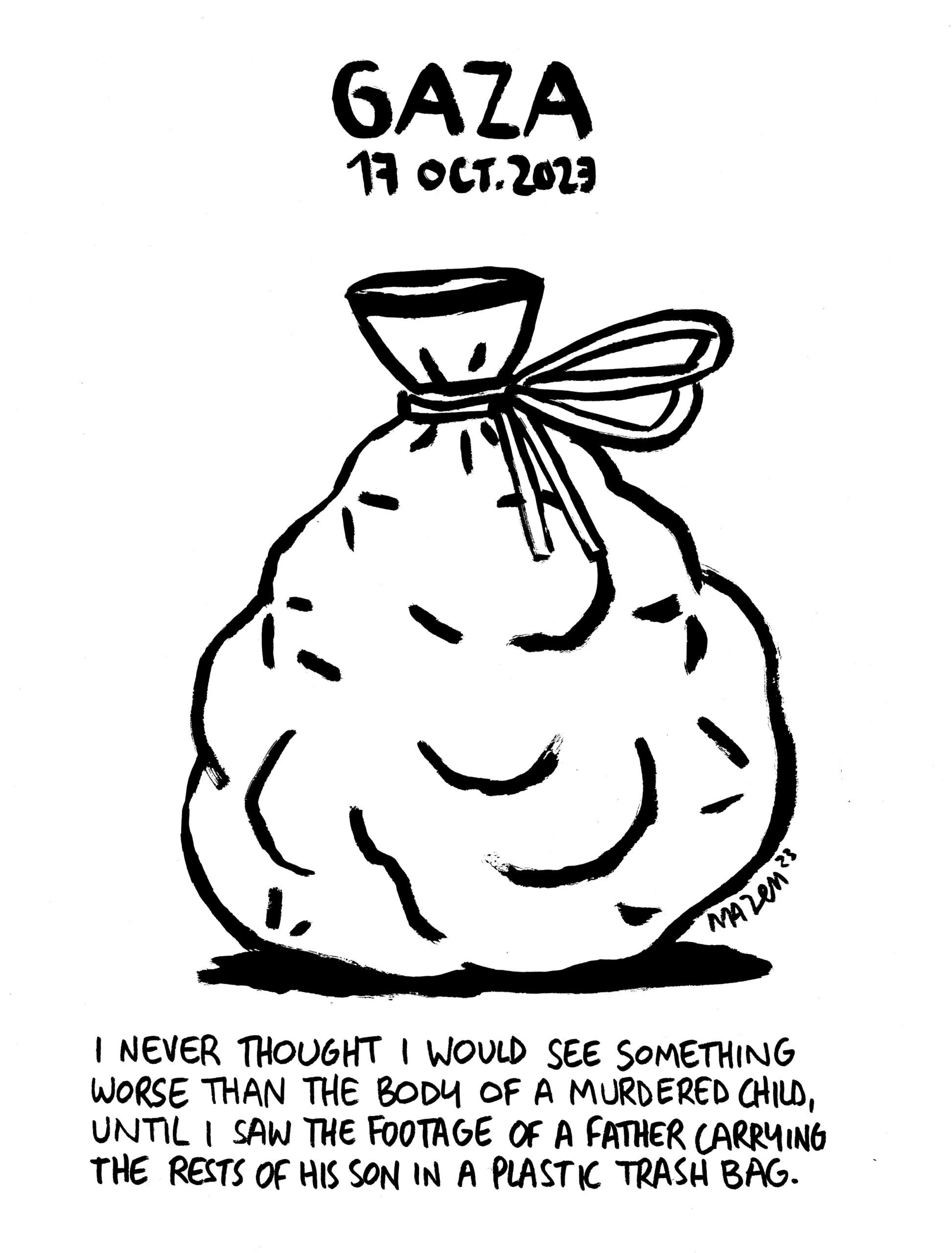
When the war broke out in Gaza he felt the urge to draw. When he saw an image of a father carrying the remains of his child in a garbage bag, he decided to fight back with drawing. This fighting mode for him is not meant for winning the war, it is just that he has to do it in order to save at least himself. To not go insane. It prevents him from getting depressed. He says: “I am satisfied when I do a good drawing and I feel depressed that I am satisfied about a drawing of something this awful. And if I stop drawing, I am even more depressed. What we are witnessing and dealing with has changed each and every aspect of our lives. Forever.” It feels right that he can do something to raise awareness of the situation. Responses from people help him to cope with the situation. He notices that people all over the world get on the street to protest and stand with Palestine. The supremacy of the United States and the old white world, who always have Israel’s back, is no longer obvious. In the first months after the war started, he posted drawings every day and shared them on social media, encouraging people to reproduce them and use them in demonstrations or on the walls of their cities. In the past month, he has stopped making drawings about Gaza. “I feel I have nothing more to say than to repeat the same things”, he says. “I don’t want to pity the Gazan people” he says. “When I am optimistic, I think things will get better. The cost is very high, but the result may be that the situation in Palestine will get better. A lot of people, especially young people, all over the world get on the streets to protest and show that this cannot be tolerated any longer. The world is finally aware of Palestine again. It is impossible to go back to how things were before.”
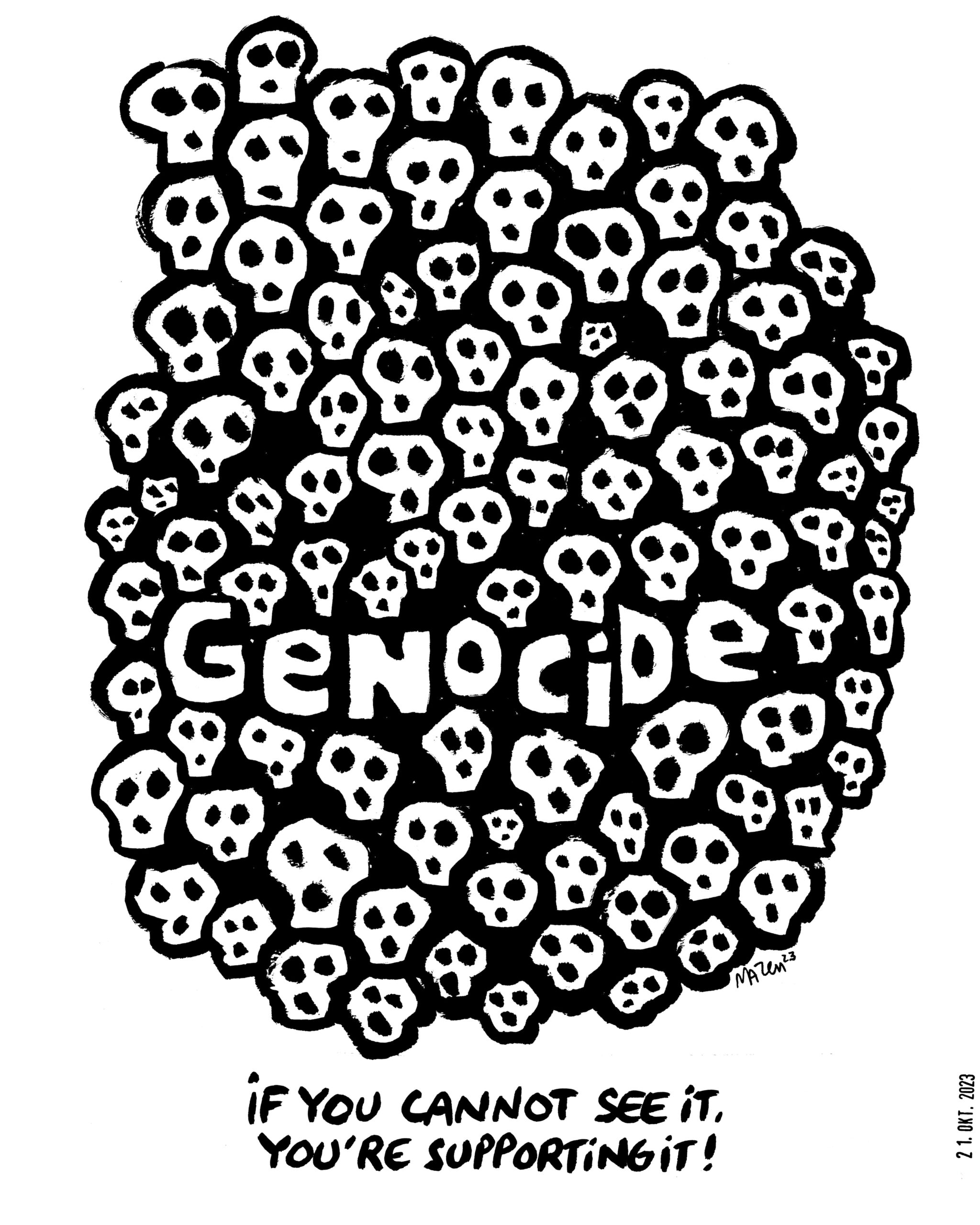
He has noticed that you have to be very careful with what you draw nowadays, there is a lot of censorship on social media, especially around sensitive topics like this. You have to be careful with which words you use. But if you draw the words, you can say whatever you want, because the algorithms cannot read the text in a jpeg (yet)!
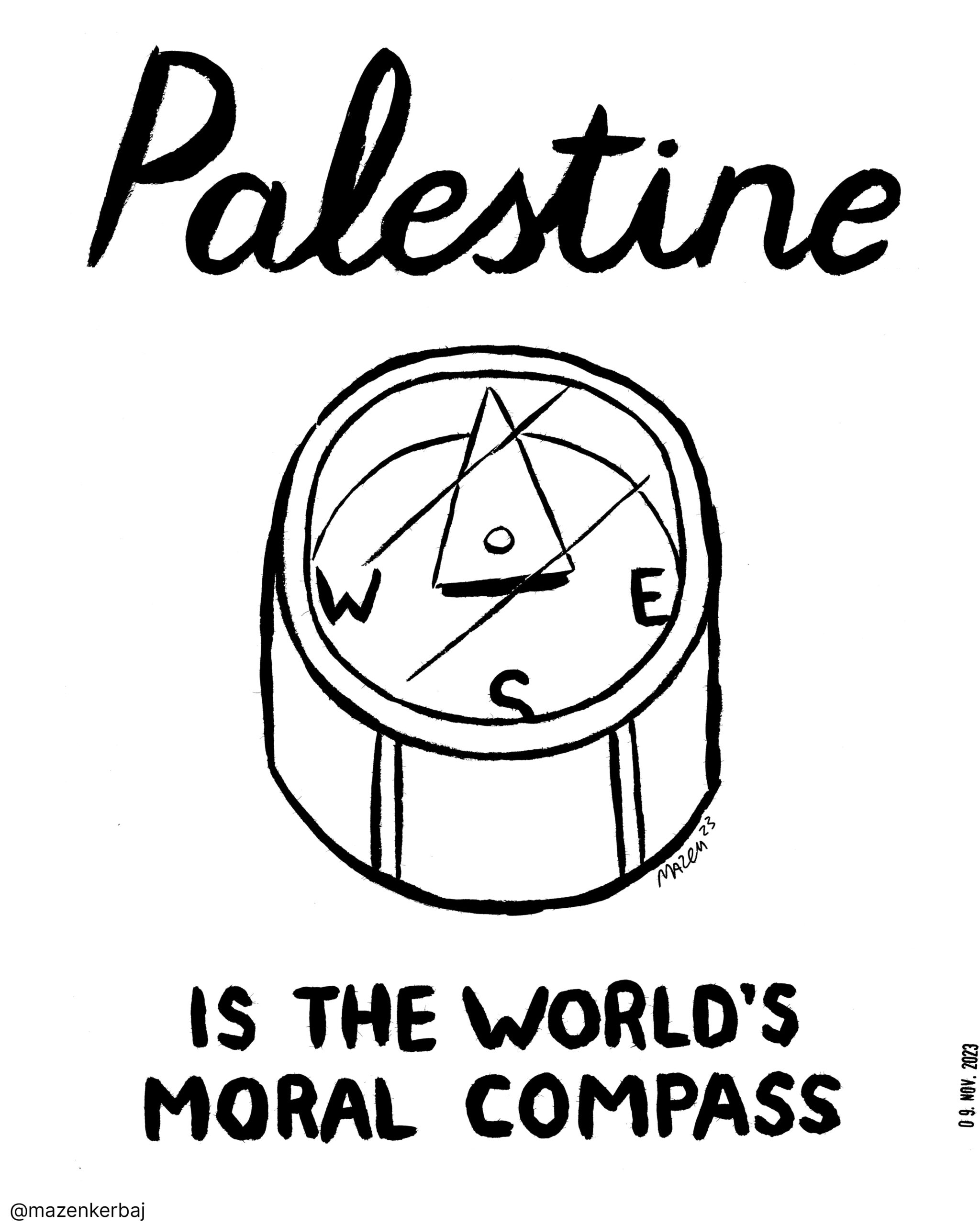
Since he is drawing much less in the past months, he decided to use the drawings in another way to keep protesting the situation. He made stickers from the drawings and is selling them online. He sends the money he raises to UNRWA, a UN organization that is active in Palestine since 1949. The images are black and white with a line of text. They are made to stick on the wall to raise awareness; at the time of the interview, some people were sticking them in the streets of Venice during the Biennale. He also exhibited all the drawings in London. The exhibition was called Don’t Stop Drawing – Visual Diaries in Solidarity with Gaza, showing both his drawings and the drawings of Lebanese artist Jana Traboulsi in the P21 Gallery.
